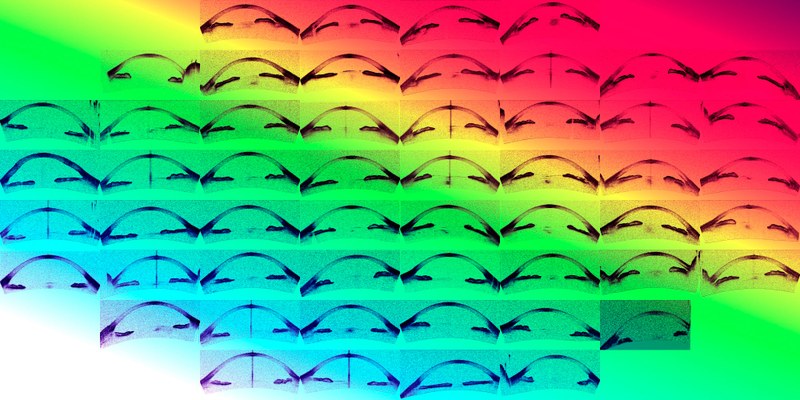Pablo Amil creates the first tomography map for diagnosing glaucoma
Jun 12, 2019
The researcher from the Physics department has created an objective model that classifies the degrees of the iridocorneal angle, a key element for assessing the severity of glaucoma. With this model, ophthalmologists will have a tool to help patients make a decision when considering surgery.
Glaucoma is the leading cause of irreversible blindness worldwide. It is characterised by optic nerve degeneration and progressive peripheral vision loss. Degeneration occurs due to elevated intraocular pressure that causes changes in the iridocorneal angle.
To treat this illness, ophthalmologists establish a diagnosis and advise the patient whether to undergo surgery or not, but the final decision lies with patients, who decide exclusively based on their doctor’s advice. However, the researcher Pablo Amil, from the research group in Nonlinear Dynamics, Nonlinear Optics and Lasers (DONLL) at the Universitat Politècnica de Catalunya · BarcelonaTech (UPC), in collaboration with Ulrich Parlitz, a researcher from the Max Planck Institute for Dynamics and Self-Organization in Germany and the Instituto de Microcirugía Ocular (IMO) in Barcelona, has created a tool that will objectively show patients the severity of their glaucoma and help them make an informed decision on surgery.
Pablo Amil has created the first tomography map for diagnosing glaucoma with an artificial intelligence algorithm, to which he applied 1,000 images of iridocorneal angles. He then sorted and arranged them on a grid according to severity (severe, moderate and mild) and compared this distribution with 160 diagnoses made by ophthalmologists. The correlation result is almost the same between the map created by Amil and the severity diagnosed by ophthalmologists.
The method has been developed in the framework of the European project Be-Optical, funded by the Horizon 2020 programme and coordinated by Cristina Masoller, another researcher at the UPC campus in Terrassa. The IMO is also participating in this project, which aims to train young researchers and develop new methodologies to analyse biomedical data and contribute to the early detection of eye diseases. The project is supported by the European Regional Development Fund (ERDF) and the ICREA Acadèmia.
Unsupervised feature extraction of anterior chamber OCT images for ordering and classification
P. Amil, L. González, E. Arrondo, C. Salinas, J. L. Guell, C. Masoller, & U. Parlitz.
Scientific Reports 9,Article number: 1157 (2019)

Share: